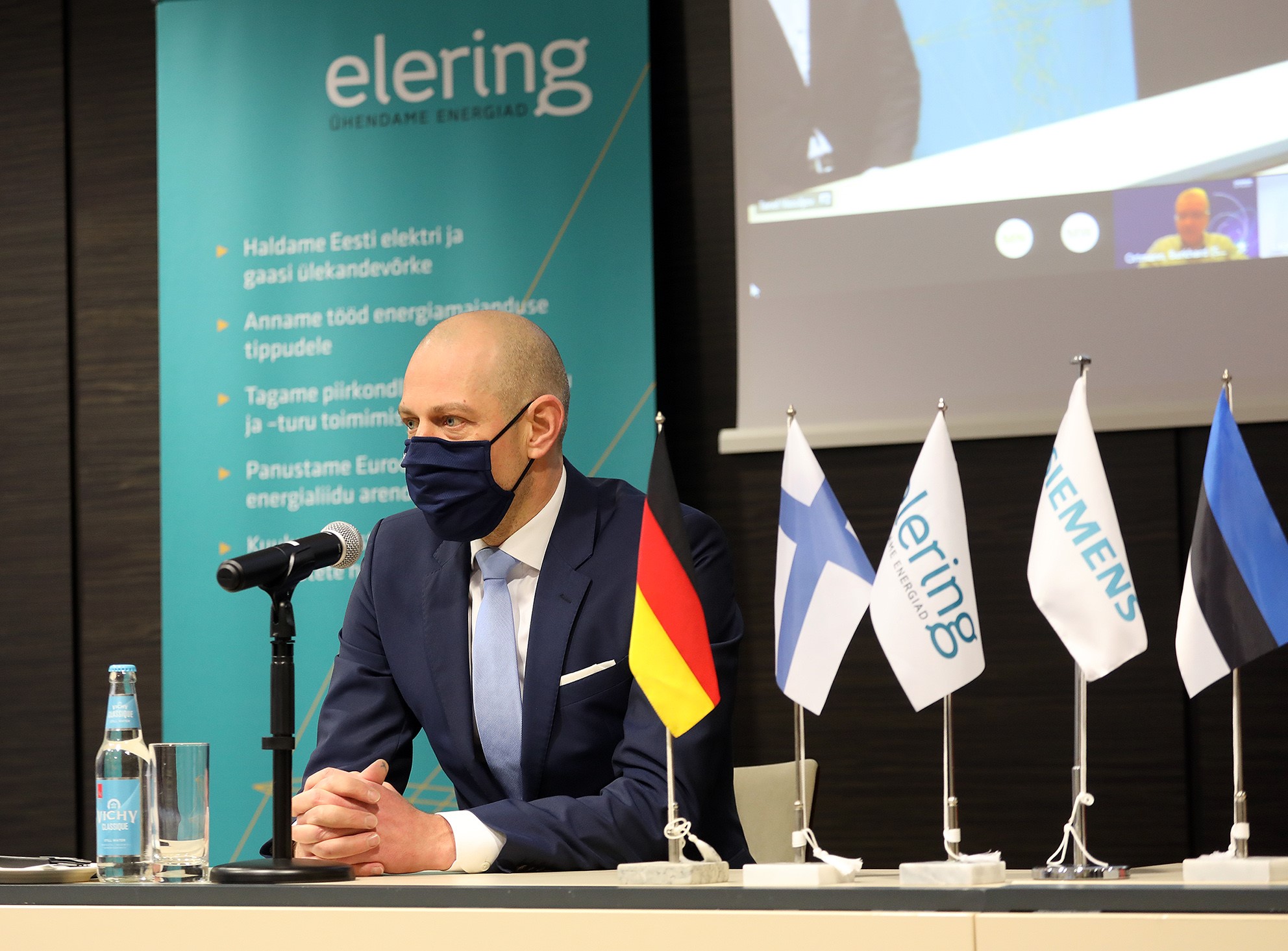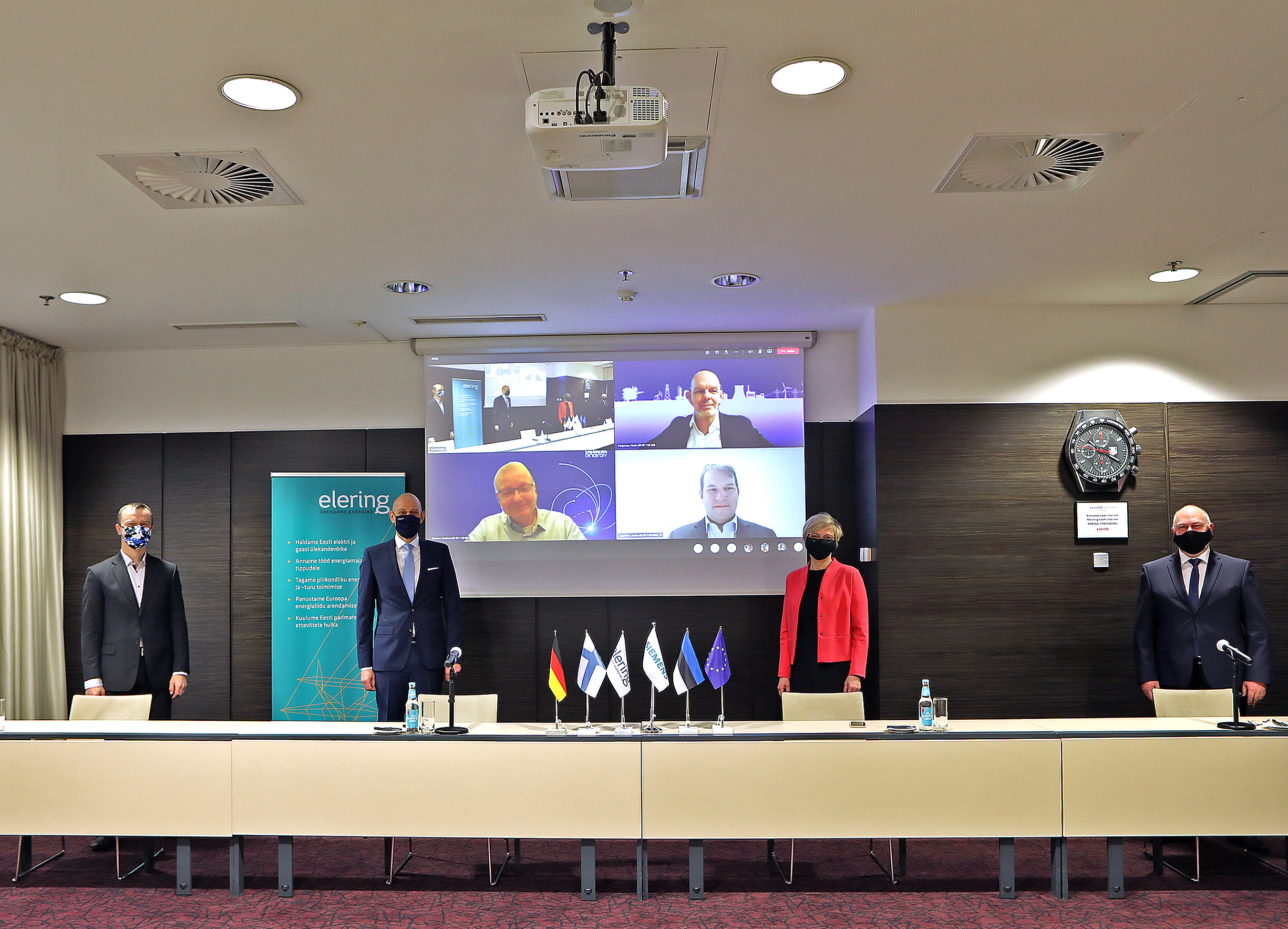16.12.2020 10:58
Elering will build three synchronous condenser stations in order to connect to the grid of Continental Europe
Today, 16 December, Estonian transmission system operator Elering entered into a contract with Siemens Energy for the construction of three synchronous condensers ensuring the frequency stability of the power grid at Viru, Püssi and Kiisa 330 kV main substations.
The Estonian branch of Siemens Energy Oy and Siemens Energy Global, participating in the procurement as joint tenderers, were confirmed as the winners of the procurement by submitting the lowest tender. The total cost of the tender was 83.5 million euros. Three tenderers participated in the procurement, with the most expensive tender at 179 million euros. The cost of the procurement was evaluated in three parts – in addition to the cost of construction of the condensers, the maintenance costs for eight years and the operating costs for the entire usable life were also taken into consideration.
According to Taavi Veskimägi, Chairman of the Management Board of Elering, the synchronous condensers are the primary technical capacity to be operated from Elering’s network control centre in order to ensure the operation of the power system after cut-off from Russia. “Without the inertia provided by this equipment, the hazard for the unexpected shutting off of the power system and leaving consumers without power would be very high. This is a vital investment in order to create the first ‘defensive barrier’ for the power system,” explained Veskimägi.
The three synchronous condensers to be constructed for the Estonian power grid will ensure the frequency stability after changing the frequency area, as well as the capacity to control the rate of change of frequency. The synchronous condensers will slow down the speed in the change of frequency in emergency situations, providing a period of time for launching the subsequent reserves. The equipment will be built in the German plant of Siemens Energy Global.
The construction of the synchronous condensers does not bring about any further monetary expenses to electricity consumers by way of rise in rates as Elering will finance the construction via the Connecting Europe Facility by three-quarters and from congestion income by one-quarter. The project for synchronisation with the power system of Continental Europe will cost Estonia about 300 million euros, of which the majority is covered from European Union co-financing. Starting from the Estlink2 electricity connection, Elering has involved more than 414 million euros of European Union resources in Estonian energy infrastructure projects thanks to successful application rounds.
The start of the synchronous condenser design and construction work is planned for 2021 and the last of the condensers will be operating by late 2024.
By the end of 2025, the Baltic electricity systems will be ready to cut off from the united Russian electricity system, where Russia controls the frequency. The transition to the Continental European frequency area will give the Baltics total control over their electricity system. Likewise, possibilities for electricity trading between the Baltics and other countries belonging to the Continental Europe frequency area will improve.


